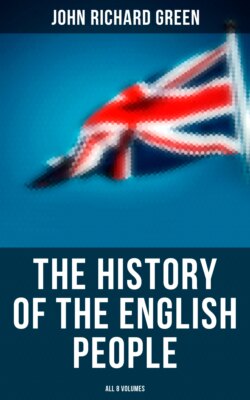Читать книгу The History of the English People (All 8 Volumes) - John Richard Green - Страница 12
AUTHORITIES FOR BOOK II 1071–1204
ОглавлениеAmong the Norman chroniclers Orderic becomes from this point particularly valuable and detailed. The Chronicle and Florence of Worcester remain the primary English authorities, while Simeon of Durham gives much special information on northern matters. For the reign of William the Red the chief source of information is Eadmer, a monk of Canterbury, in his "Historia Noverum" and "Life of Anselm." William of Malmesbury and Henry of Huntingdon are both contemporary authorities during that of Henry the First; the latter remains a brief but accurate annalist; the former is the leader of a new historic school, who treat English events as part of the history of the world, and emulate classic models by a more philosophical arrangement of their materials. To these the opening of Stephen's reign adds the "Gesta Stephani," a record in great detail by one of the King's clerks, and the Hexham Chroniclers.
All this wealth of historical material however suddenly leaves us in the chaos of civil war. Even the Chronicle dies out in the midst of Stephen's reign, and the close at the same time of the works we have noted leaves a blank in our historical literature which extends over the early years of Henry the Second. But this dearth is followed by a vast outburst of historical industry. For the Beket struggle we have the mass of the Archbishop's own correspondence with that of Foliot and John of Salisbury. From 1169 to 1192 our primary authority is the Chronicle known as that of Benedict of Peterborough, whose authorship Professor Stubbs has shown to be more probably due to the royal treasurer, Bishop Richard Fitz-Neal. This is continued to 1201 by Roger of Howden in a record of equally official value. William of Newburgh's history, which ends in 1198, is a work of the classical school, like William of Malmesbury's. It is distinguished by its fairness and good sense. To these may be added the Chronicle of Ralph Niger, with the additions of Ralph of Coggeshall, that of Gervase of Canterbury, and the interesting life of St. Hugh of Lincoln.
But the intellectual energy of Henry the Second's time is shown even more remarkably in the mass of general literature which lies behind these distinctively historical sources, in the treatises of John of Salisbury, the voluminous works of Giraldus Cambrensis, the "Trifles" and satires of Walter Map, Glanvill's treatise on Law, Richard Fitz-Neal's "Dialogue on the Exchequer," to which we owe our knowledge of Henry's financial system, the romances of Gaimar and of Wace, the poem of the San Graal. But this intellectual fertility is far from ceasing with Henry the Second. The thirteenth century has hardly begun when the romantic impulse quickens even the old English tongue in the long poem of Layamon. The Chronicle of Richard of Devizes and an "Itinerarium Regis" supplement Roger of Howden for Richard's reign. With John we enter upon the Annals of Barnwell and are aided by the invaluable series of the Chroniclers of St. Albans. Among the side topics of the time, we may find much information as to the Jews in Toovey's "Anglia Judaica"; the Chronicle of Jocelyn of Brakelond gives us a peep into social and monastic life; the Cistercian revival may be traced in the records of the Cistercian abbeys in Dugdale's Monasticon; the Charter Rolls give some information as to municipal history; and constitutional developement may be traced in the documents collected by Professor Stubbs in his "Select Charters."
